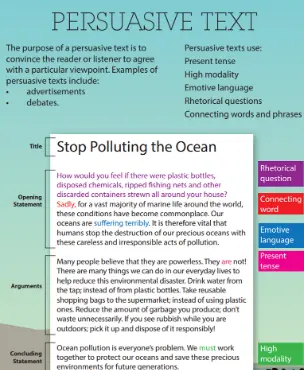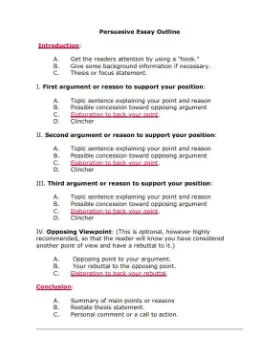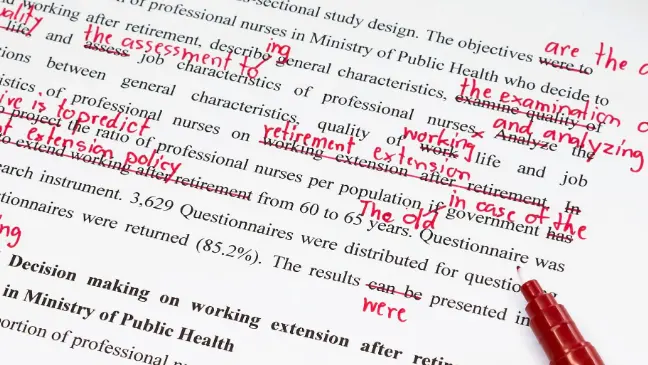Persuasive Essays: Introduction, Structure, & Topic Examples

A persuasive essay is a piece of writing through which the writer seeks to get the readers to agree with a particular point of view. Ideas and research are presented in a way that can sway the reader toward the writer’s thinking.
These essays aim to show that some ideas are better and more legitimate than others. The arguments must be presented in sound reasoning using facts, examples, and quoting experts.
A persuasive essay should have three modes of persuasion. These modes coined by Aristotle work together to form an argument that persuades readers. These modes include.
People Also Read: Past, Present, and Future Tense in Essays: How to Switch
Ethos
This is where the writer establishes his or her moral character, credibility, and knowledge. Ethos helps sell the writer’s point of view.

Readers usually tend to believe someone’s personal experiences and credible knowledge.
Pathos
These are appeals to the emotions of the audience that evoke their feelings. The audience easily connects to your writing if you trigger their emotions.
Emotions build interest in your essay among readers by making it stickier, more attractive, and more convincing.
Logos
This involves appealing to the audience’s rationality and logic rhetorically or persuasively. All persuasive writings should always outline several logical reasons that will make readers believe the writer’s arguments.
If you require techniques to write a good persuasive essay, all you should do is say the same thing in a variety of ways to ensure that the reader understands it fully. Also, using stories to explain your arguments will help drive your point home.
Lastly, the opposing side of the essay should not be ignored. The opposing side should be deconstructed using credible arguments.
Purposes of a Persuasive Essay
- Persuasive essays explain points exhaustively to make readers understand the position taken on a paper. There are many types of arguments. Therefore, the ones provided in your paper should be specific.
- These essays also give facts that support arguments. These include statistics and information researched in academic journals and articles, government publications, and other professional sources.
- Next is presenting arguments from the least important to the most important sequence. A persuasive essay always builds up to the most important arguments that should completely disapprove of opposing arguments.
People Also Read: How to Do Your Homework Fast and Correctly Without Doing It
How to Write a Good Persuasive Essay?

Many writers may choose different methods of approaching persuasive essays.
However, there are general guidelines to follow when you want to write an essay that will persuade an audience. These include:
1. Picking a Topic and Formulating a Thesis
If you have the chance to choose a topic, pick one that you believe you can write to your best and persuade the audience using credible arguments. Also, pick a topic that you resonate with.
If the topic is provided, you must gain prior knowledge about it before you start writing. If you have a strong opinion about the topic before you start writing, it will be easier to persuade the reader about the arguments you make.
The main argument of your essay will form the thesis statement of your essay. It is therefore important to ensure that the argument is what your essay will be all about.
2. Know your Audience
You must know who you are talking to for you to come up with arguments that will persuade them. The audience is what the writer should always keep in mind when formulating and writing every argument in the essay.
The arguments must be sensible and aimed directly at them. For example, if you are writing about why children should not be allowed access to social media, the target audience is their parents and every argument should be directed to them.
3. Research both Sides
Persuasive essays usually have two sides. Get to know the side you want to disagree with and thoroughly compare it to the side you want to persuade your readers to choose. Make sure to prove why your argument is better.
Some members of your audience may be stuck in their ways. Therefore, you must know what they stand for so that you can effectively counter their opposition.
No room should be left for the target audience to establish doubts about your arguments.
4. Outline your Arguments
The main reason you write an outline of a persuasive essay is to help effectively organize your thoughts and plan how to build your arguments to convey your points effectively.

Also, an outline will help organize what you have researched and dictate the structure of your essay. Outline your subtopics to be prepared before you start writing. All the main points should be detailed and paired with supporting relevant information and evidence from credible sources.
5. Write the Introduction
After formulating an outline, it is time to write your essay. Introduce the essay using a catchy title. Most persuasive essay titles are posed as questions comparing the two contradicting issues in the essay.
The introductory paragraph of the essay should be strong. Its main purpose is to present what the essay will be all about and capture the attention of the reader. The introduction should start with a hook. It can be a statistic, quotation, or joke related to the topic under discussion.
After the hook, provide the background information that weighs up the different opinions the essay focuses on. Next, follow up the background information with a thesis statement.
This is your main argument on the topic that will be argued throughout the essay to convince the readers.
6. Write Body Paragraphs
This is the main part of the essay where you present arguments that support your thesis statement. This is usually in several paragraphs with each paragraph presenting each argument.
More complex persuasive essays require more paragraphs to build up the arguments compared to simple essays. Every paragraph should start with a topic sentence that states the main point of the paragraph. The point is then explained further to build it up and make it more specific.
The evidence can be anecdotal, quotations, or statistical evidence. The final sentence of the paragraph should link the main point of the paragraph and provide a bridge to the next argument.
7. Write the Conclusion
This paragraph summarizes the main arguments of the essay and the thesis statement.
You should always make sure that you go through the outline to reorganize your thoughts and arguments before writing the conclusion. This helps you avoid writing an introduction that does not summarize your work.
No new arguments or evidence should be provided in the conclusion. It should restate arguments in the paper and sum them up exhaustively. If you include new ideas in the conclusion, you must edit the body paragraphs to include those arguments.
The writer should focus on the main points to maintain the persuasive goal of the essay. The keywords that were used in the main arguments should be used in the conclusion too.
Conclusions should be kept simple and straight to the point. They should be brief ranging between 4-6 sentences.
8. Proofread Your Essay
Before submitting or presenting your work, it is usually important to read through it. This is the only way you will notice grammatical errors, missing words, and sentence structure problems.

These errors can damage your credibility to the readers of your work or lead to a bad grade. Do not rely on grammar and error-checking tools. Proofreading the work on your own is the best way. That is the only way you identify the obvious errors you made when writing the work.
You will easily identify each error at a time by reading the work slowly and dividing it into chunks if it is a long essay. Also, check whether the work is punctuated properly and review every heading or paragraph separately to make sure that they all make sense and support your thesis statements.
Proofreading your work helps identify the mistakes that you frequently make in your writing and you can be sure to correct them in the future.
People Also Read: Pearson Homework Answers: Genuine Help in Sciences & Maths
9 Good Topics for Persuasive Essays
- Should students be able to substitute music and art classes for P.E. in school?
- Is it better to spend the summer holiday as a paid worker at a local company or as an unpaid worker at one of the biggest companies in the country?
- Should colleges and universities take into consideration the race of students when admitting them to reduce victims of racism in those institutions?
- Taking into consideration the Covid-19 lockdown period, can online learning be as effective as the traditional ways of learning?
- Will the increased inventions of different types of technologies in the world today cause an increase or decrease in inequality?
- Is punishing offenders using incarceration deterring them from crime, or should offenders be reformed and rehabilitated while still in the society they wronged?
- Should there be a nationwide ban on the owning of the breed of aggressive dogs?
- With the increased doping cases among athletes, should those who return a positive drug test be subjected to lifetime bans?
- With translation technology rising as days go by, will knowing multiple languages become a mandatory task?

When not handling complex essays and academic writing tasks, Josh is busy advising students on how to pass assignments. In spare time, he loves playing football or walking with his dog around the park.




